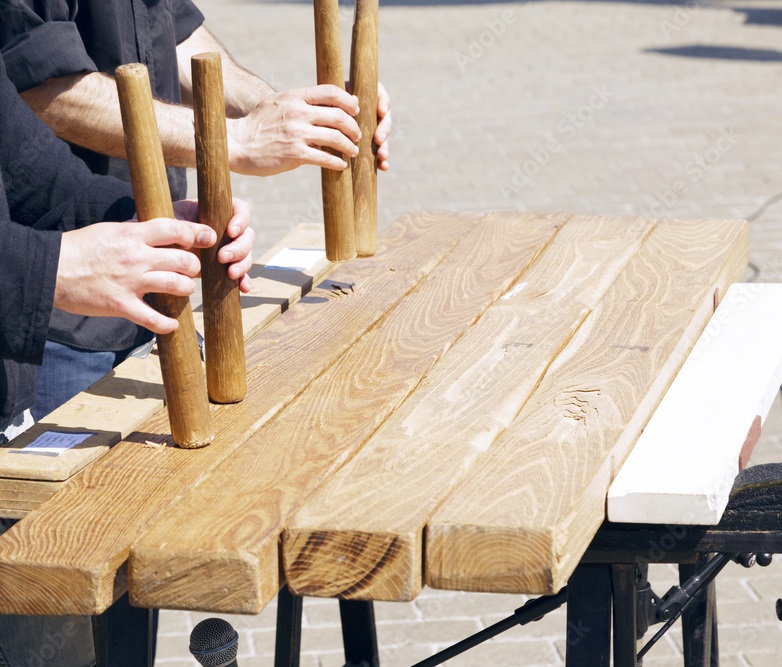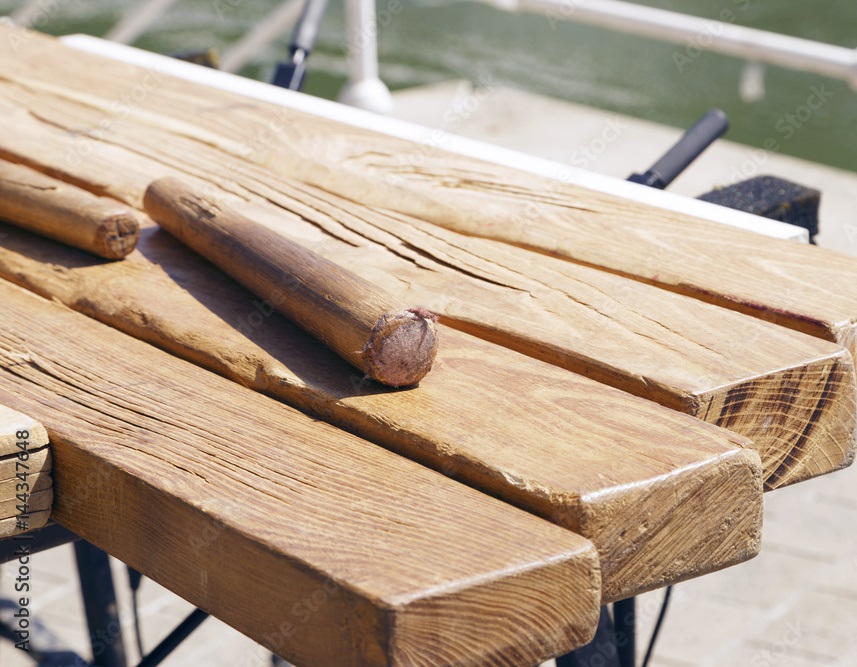Txalaparta
Percussions
Europe
Between 1001 and 1900 AD
Video
The Txalaparta is a traditional percussion instrument from the Basque Country, known for its unique sound and playing technique. It consists of wooden planks or beams that are struck with sticks, producing rhythmic and resonant tones. The instrument is played by two musicians who engage in an intricate and spontaneous musical dialogue. The Txalaparta’s rhythmic patterns can vary from simple beats to complex and improvised sequences, making it a highly dynamic and interactive instrument.
Type of Instrument: The Txalaparta falls into the category of idiophones, which are instruments that produce sound primarily through the vibration of their material without the need for strings, membranes, or external resonators. More specifically, it is a percussion idiophone, as it is played by striking its wooden or stone components with sticks.
History
The txalaparta’s origins trace back to the Basque Country, spanning northern Spain and southwestern France. While its exact beginnings remain debated, evidence suggests its use by the 15th century for communication during cider production, festivals, and funerals. Nearly extinct by the 1950s, folklorists like the Artze brothers revived it, transforming it into a cornerstone of Basque musical heritage.
Cultural Evolution
Initially a tool for summoning neighbors to cider tastings, the txalaparta later became a celebratory instrument at weddings and communal gatherings. Parallels exist with the Romanian toacă and Greek semantron, suggesting pre-Christian liturgical links.
Construction
Traditional txalapartas were built from long wooden planks (150–200 cm) supported by baskets or corn stalks. Modern versions use shorter boards (12–20 cm wide) on foam-padded trestles. Woods like ash, oak, or walnut are common, though tropical hardwoods provide distinct tones. Sticks (makilak) are typically 37.5–88 cm long, made of ash for durability.
Materials and Acoustics
Stone txalapartas produce sharper, metallic tones, while wooden variants offer warmer resonance. Adjusting plank thickness and support materials (e.g., fabric-wrapped foam) allows performers to fine-tune sustain and timbre.
Types of Txalaparta
There are two primary types of Txalaparta: the traditional wooden Txalaparta and the more contemporary stone version known as “Harrizko Txalaparta.” The wooden Txalaparta is the most common and retains the original essence of the instrument, while the stone variant offers a different timbre and tonal possibilities. Some musicians have also experimented with metal and other materials, further expanding the instrument’s versatility.
Characteristics
The Txalaparta is defined by its percussive and rhythmic nature. Its most distinctive characteristic is the interplay between two players, who engage in an alternating pattern of beats, often responding to and challenging each other in real-time. The instrument allows for great improvisation, making each performance unique. The resonance of the planks and the technique of striking create a rich variety of sounds, ranging from deep, booming tones to sharp, crisp beats.
Sound Production
Sound is produced by striking the wooden planks with the sticks in a controlled manner. The vibration of the planks, coupled with the material’s natural properties, results in a resonant and percussive tone. The spacing of the supports and the length of the planks influence the pitch and sustain of the sound. When played skillfully, the Txalaparta can produce an intricate, layered rhythm that is both hypnotic and dynamic.
Playing Methods
Playing the Txalaparta requires coordination and communication between two performers. The players stand on opposite sides of the instrument and take turns striking the planks. One musician lays down a base rhythm, known as “ttakuna,” while the other adds improvisational elements, called “herrena.” This method creates a lively, call-and-response style of play that emphasizes spontaneity and musical conversation. The intensity and tempo can vary, allowing for expressive and dramatic performances.
Roles in Music
Traditionally, the Txalaparta was used in celebratory settings, particularly in rural communities. It was played to signal important events such as weddings, communal gatherings, and cider-making festivities. In modern times, it has found a place in various musical genres, including folk, contemporary, and experimental music. Many Basque musicians incorporate the Txalaparta into their performances to highlight cultural heritage and introduce audiences to its unique sound.
Cultural Significance
The Txalaparta holds a special place in Basque culture, symbolizing tradition, community, and identity. It represents the spirit of improvisation and collaboration, as it requires two musicians to work together in harmony. The instrument has also become a symbol of Basque resistance and cultural preservation, as its revival in the 20th century coincided with efforts to maintain Basque language and traditions. Today, the Txalaparta is featured in festivals, concerts, and educational programs, ensuring its legacy continues for future generations.
The Txalaparta is more than just a musical instrument; it is a testament to the rich cultural heritage of the Basque people. Its dynamic playing style, historical significance, and deep-rooted connection to communal life make it a fascinating and enduring element of world music traditions.
FAQ
What are the types of the Txalaparta musical instrument?
The Txalaparta comes in different types, mainly traditional and modern variations. The traditional version consists of wooden planks played with sticks, while modern versions sometimes use stone or metal. Both types produce rhythmic percussive sounds. The variations depend on the material used and regional influences.
Who typically uses the Txalaparta?
The Txalaparta is traditionally played by the Basque people, especially in folk music settings. It is often performed by two musicians working in coordination to create dynamic rhythms. Modern artists and experimental musicians also use it in contemporary music. It remains an essential part of Basque cultural heritage.
What is the Txalaparta used for?
Historically, the Txalaparta was used for communication between villages in the Basque Country. Over time, it evolved into a musical instrument for celebrations and festivals. Today, it is played in concerts, cultural events, and experimental music performances. It symbolizes unity and collaboration in Basque traditions.
 Links
Links
References
Other Instrument
Categories



















